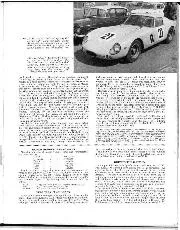
February flash-back
A few points arise in retrospect since publication of last month's issue. The stolen Editorial Mini Minor was found in Swindon. So there is no need to apprehend anyone seen…
orthodox means. We undid the nuts holding the block to the crankcase, and while a confederate heaved on the starting handle. I put a chair leg on each of the descending pistons in turn and clouted it with a large hammer. The rest, was quite plain sailing. The wiring I left to the local garage. The only new part required (apart from tyres) was a cut-out, which is by any standard very good going indeed for a car which was first taxed in July of 1924, and has had very hard use. It has, I know, been used to cart potatoes about fields, and to haul timber out of a wood. I would like to know a lot more about the car’s history. I have been told that it is a fiat-twin chassis with a fourcylinder water-cooled engine in it., but as the car number, LD 40120, is also on the engine and chassis, that seems unlikely.
Perhaps it is because it is the first car I have owned, but it seems a very “driveable ” car. It is economical, doing about 35-40 m.p.g., and moderately fast. It never stands under a roof, and it is usually run only at weekends (when, with my wife, an enthusiastic passenger, I roar round the countryside), but it starts very easily. The acceleration and road-holding amaze the pilots of pottering fug-boxes. Long may their derisive grins in their mirrors be turned to puzzled stared at the rear views of the old ‘uns.
I don’t know if there are many more Rovers of this type about, but I would like to hear from anyone who runs one. I am, Yours, etc..,
Downham Market. J. D. MAJOR. [The early four-cylinder Rover Nine followed the flat-twin Rover Eight and no doubt much of the chassis is identical. —ED.] * * *